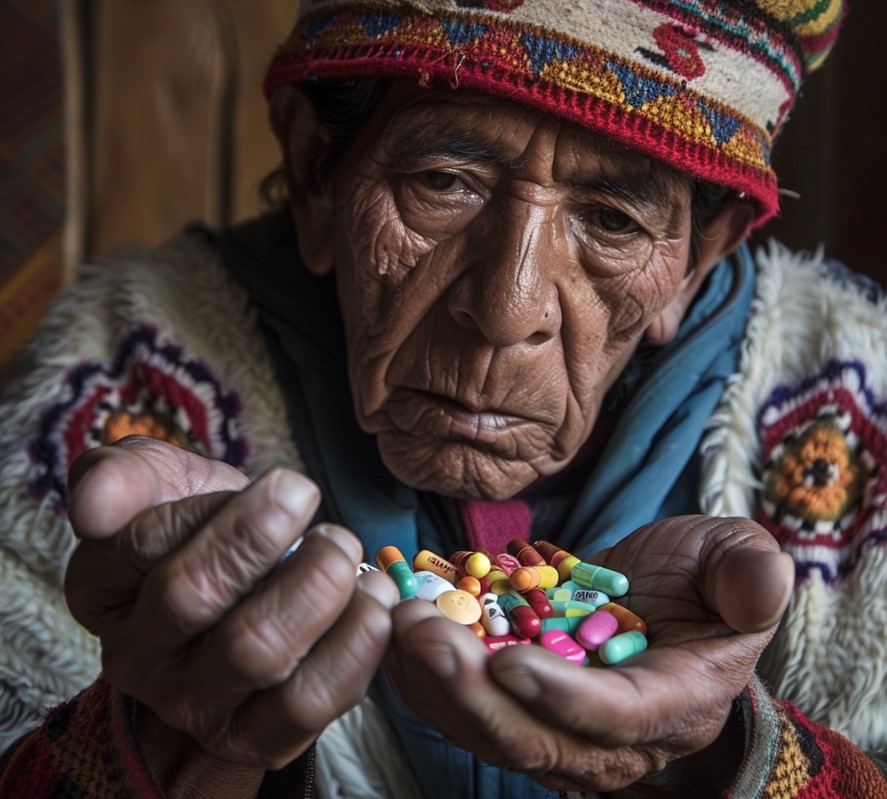Medications not allowed in Peru
Peru has strict regulations on the importation of medications, and travelers are not allowed to bring in any personal medications that contain prohibited substances, even if they remain within the country. These restrictions aim to prevent the trafficking of illicit drugs and protect public health.
List of Medications Not Allowed in Peru
Peru has strict regulations on the importation of medications, and travelers are not allowed to bring in any personal medications that contain prohibited substances, even if they remain within the country. These restrictions aim to prevent the trafficking of illicit drugs and protect public health. Here is a list of medications that are not allowed in Peru:
- Narcotics and psychotropic substances: Travelers are not allowed to bring controlled substances of unknown therapeutic use into Peru. Medications containing narcotics and psychotropic substances are generally prohibited, and travelers are advised to use the Peruvian National Institute of Health’s online tool to find out whether their medications contain any prohibited substances.
- Pseudoephedrine and codeine: Medications containing pseudoephedrine, which is a common ingredient in cold and allergy medications, are also not allowed in Peru. Similarly, medications containing codeine, which is a narcotic pain reliever, are also not allowed in Peru.
- Medications containing ephedrine: Medications containing ephedrine, which is a stimulant and decongestant, are also prohibited in Peru.
- Medications containing sibutramine: Sibutramine is a weight loss medication that has been banned in many countries due to its association with cardiovascular events. It is also prohibited in Peru.
- Medications containing phenylpropanolamine: Phenylpropanolamine is a decongestant that has been associated with an increased risk of hemorrhagic stroke. It is also prohibited in Peru.
- Medications containing fenfluramine: Fenfluramine is a weight loss medication that has been banned in many countries due to its association with heart valve disease. It is also prohibited in Peru.
- Medications containing dexfenfluramine: Dexfenfluramine is a weight loss medication that has been banned in many countries due to its association with heart valve disease. It is also prohibited in Peru.
- Medications containing mazindol: Mazindol is a weight loss medication that has been associated with psychiatric side effects. It is also prohibited in Peru.
- Medications containing amfepramone: Amfepramone is a weight loss medication that has been associated with psychiatric side effects. It is also prohibited in Peru.
- Medications containing diethylpropion: Diethylpropion is a weight loss medication that has been associated with psychiatric side effects. It is also prohibited in Peru.
It is important to note that this list is not exhaustive, and travelers are advised to check with the Peruvian National Institute of Health or the nearest Peruvian embassy or consulate for information about specific requirements related to their medications.

Narcotics and Psychotropic Substances
Travelers are not allowed to bring controlled substances of unknown therapeutic use into Peru. Medications containing narcotics and psychotropic substances are generally prohibited, and travelers are advised to use the Peruvian National Institute of Health’s online tool to find out whether their medications contain any prohibited substances.
Pseudoephedrine and Codeine Restrictions
Medications containing pseudoephedrine, which is a common ingredient in cold and allergy medications, are also not allowed in Peru. Similarly, medications containing codeine, which is a narcotic pain reliever, are also not allowed in Peru.
Prescription Requirements and Exceptions
Some medications may require a valid prescription from a healthcare professional in order to enter Peru. Travelers are encouraged to contact the Peruvian National Institute of Health or the nearest Peruvian embassy or consulate for information about specific requirements related to their medications.
Exceptions include medications for chronic conditions, such as insulin for diabetics, but travelers are still required to present documentation confirming their condition and the necessity of carrying the medication.
Penalties for Noncompliance
Noncompliance with Peru’s import regulations could result in severe penalties, including fines, detention, deportation, and criminal charges. Therefore, it is essential to understand and comply with the rules governing the importation of medications into Peru.
How to Check Permitted Medications
To avoid potential issues upon entering Peru, travelers should research the permitted medications before departure. They can refer to the Peruvian National Institute of Health’s website, which provides detailed information about restricted substances and exceptions. Alternatively, travelers can seek advice from their healthcare provider or a local pharmacist experienced in international travel.
Tips for Safe Travels with Medications
To minimize risks associated with traveling with medications, consider the following tips:
- Carry medications in their original packaging, along with a copy of the prescription or a letter from a healthcare provider explaining why the medications are needed.
- Pack medications separately from other items to facilitate inspection during security checks.
- Keep medications in a cool, dry place, away from direct sunlight.
- Avoid packing medications in checked luggage; instead, keep them in hand luggage.
- Be prepared to show proof of the medication’s legitimacy, such as a receipt or prescription, upon request.
By understanding and complying with Peru’s import regulations, travelers can safely enjoy their trips while ensuring compliance with local laws.
Where can I get OTC medication in Peru?
In Peru, you can find over-the-counter (OTC) medications at local pharmacies, supermarkets, and smaller markets known as “tienditas.” Common OTC medications in Peru include:
- Acetaminophen (Paracetamol): Pain reliever and fever reducer
- Ibuprofen: Nonsteroidal anti-inflammatory drug (NSAID), used for pain relief and reducing inflammation
- Loperamide: Antidiarrheal medication
- Mebeverine: Used for treating abdominal cramping and spasm
- Cetirizine: Antihistamine, used for allergy symptom relief
- Loratadine: Antihistamine, used for allergy symptom relief
- Salbutamol: Bronchodilator, used for asthma symptom relief
- Antacids: Used for heartburn, indigestion, and stomach upset
- Vitamins: Various combinations of essential vitamins for overall health support
It is advisable to consult a healthcare professional before taking any medication, particularly if you have a pre-existing medical condition or are taking other medications. Keep in mind that the types of medications and their availability may differ slightly compared to those in the Philippines.



